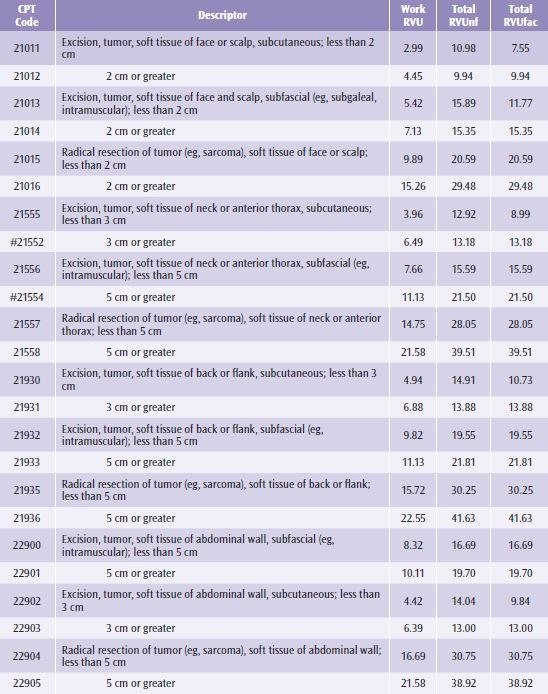In December 2007, the American Medical Association Current Procedural Terminology (CPT*) Editorial Panel Soft Tissue Tumor Workgroup finalized a consensus proposal related to reporting excision of soft tissue tumors. This effort resulted in extensive changes in the CPT 2010 Musculoskeletal System subsection, including 41 new codes, 53 revised codes, 7 deleted codes, and extensive guidelines to allow for more granular reporting of soft tissue tumor excision. More than 10 years later, however, questions continue to arise about appropriate code selection and separately reportable services. This column responds to these questions and offers clarity to coding confusion for this set of codes.
Are all soft tissue tumor excision codes located in one subsection of the CPT codebook?
No. The codes are scattered throughout the musculoskeletal system subsection, with listings under each anatomical excision subsection. For example, code 22902, Excision, tumor, soft tissue of abdominal wall, subcutaneous; less than 3 cm, can be found in the musculoskeletal system subsection for abdomen-excision. See Table 1 for a list of all codes and their respective 2021 Medicare Physician Fee Schedule relative value units (RVUs).
Are the code descriptors standardized?
Yes, for each anatomic family of codes, two codes are available to report excision of subcutaneous soft tissue tumors, two codes for the excision of subfascial soft tissue tumors, and two codes for the radical resection of soft tissue tumors. Each pair of codes is differentiated by the tumor size. Definitions in the musculoskeletal system introductory guidelines describe excision of each type of tumor:
Excision of subcutaneous soft connective tissue tumors involves the simple or marginal resection of tumors confined to subcutaneous tissue below the skin but above the deep fascia. These tumors are usually benign and are resected without removing a significant amount of surrounding normal tissue.
Excision of fascial or subfascial soft tissue tumors involves the resection of tumors confined to the tissue within or below the deep fascia but not involving the bone. These tumors are usually benign, are often intramuscular, and are resected without removing a significant amount of surrounding normal tissue.
Radical resection of soft connective tissue tumors involves the resection of the tumor with wide margins of normal tissue. Although these tumors may be confined to a specific layer (for example, subcutaneous, subfascial), radical resection may involve removal of tissue from one or more layers.
How do I select the correct code to report?
Code selection is based on the location and size of the tumor. Tumor size is determined by measuring the greatest diameter of the tumor plus that margin required for complete excision of the tumor. The margins refer to the most narrow margin required to adequately excise the tumor based on the physician’s judgment. The measurement of the tumor plus margin is made at the time of the excision.
TABLE 1. CPT SOFT TISSUE TUMOR EXCISION CODES



